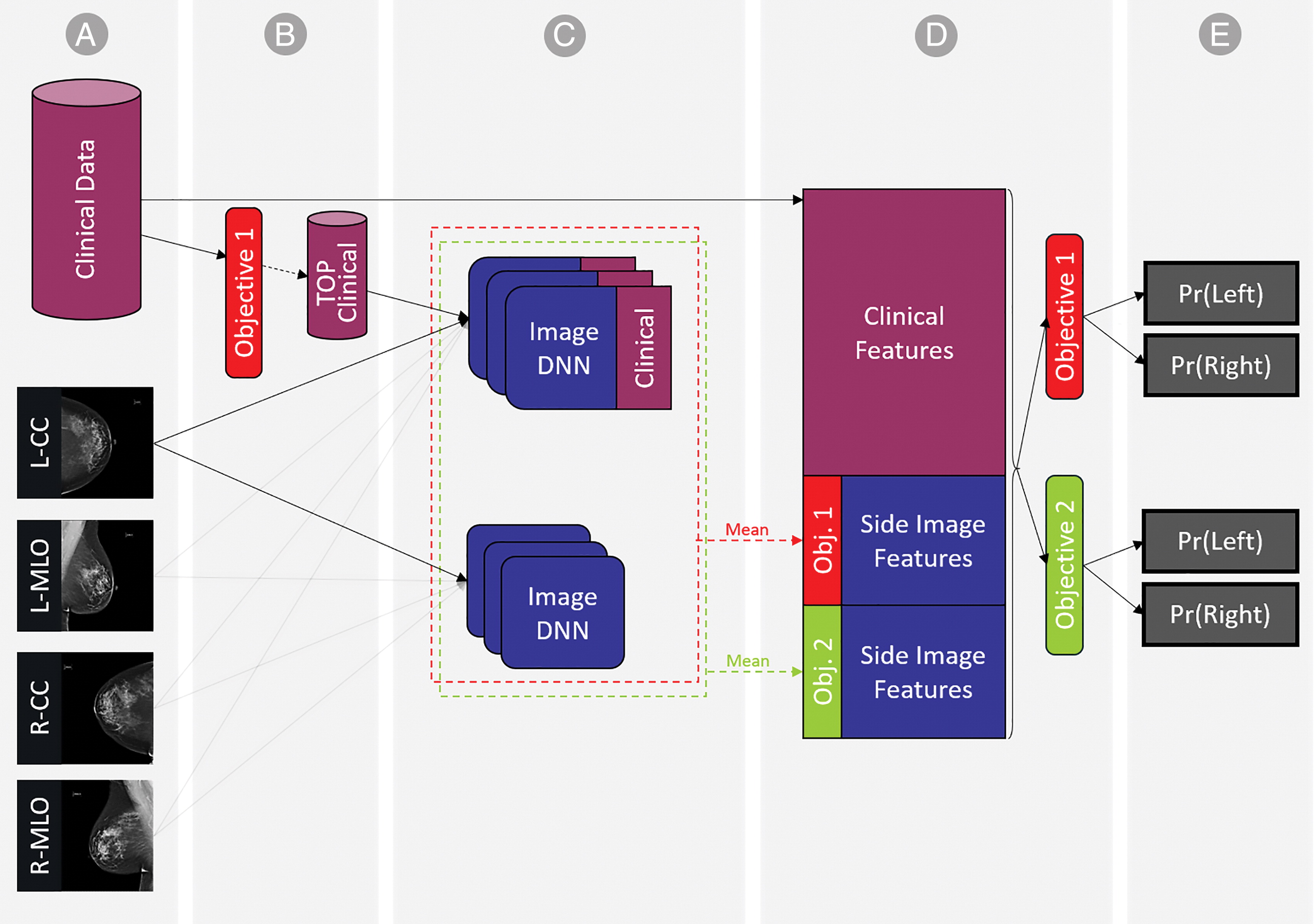Predicting breast cancer by applying deep learning to linked health records and mammograms
Improve breast cancer prediction by combining mammography with clinical records using deep learning and boosting trees.
Background: Computational models on the basis of deep neural networks are increasingly used to analyze health care data. However, the efficacy of traditional computational models in radiology is a matter of debate. Purpose: To evaluate the accuracy and efficiency of a combined machine and deep learning approach for early breast cancer detection applied to a linked set of digital mammography images and electronic health records. Materials and Methods: In this retrospective study, 52 936 images were collected in 13 234 women who underwent at least one mammogram between 2013 and 2017, and who had health records for at least 1 year before undergoing mammography. The algorithm was trained on 9611 mammograms and health records of women to make two breast cancer predictions: to predict biopsy malignancy and to differentiate normal from abnormal screening examinations. The study estimated the association of features with outcomes by using t test and Fisher exact test. The model comparisons were performed with a 95% confidence interval (CI) or by using the DeLong test. Results: The resulting algorithm was validated in 1055 women and tested in 2548 women (mean age, 55 years ± 10 [standard deviation]). In the test set, the algorithm identified 34 of 71 (48%) false-negative findings on mammograms. For the malignancy prediction objective, the algorithm obtained an area under the receiver operating characteristic curve (AUC) of 0.91 (95% CI: 0.89, 0.93), with specificity of 77.3% (95% CI: 69.2%, 85.4%) at a sensitivity of 87%. When trained on clinical data alone, the model performed significantly better than the Gail model (AUC, 0.78 vs 0.54, respectively; P < .004). Conclusion: The algorithm, which combined machine-learning and deep-learning approaches, can be applied to assess breast cancer at a level comparable to radiologists and has the potential to substantially reduce missed diagnoses of breast cancer.

Citation
@article{akselrod2019predicting,
title={Predicting breast cancer by applying deep learning to linked health records and mammograms},
author={Akselrod-Ballin, Ayelet and Chorev, Michal and Shoshan, Yoel and Spiro, Adam and Hazan, Alon and Melamed, Roie and Barkan, Ella and Herzel, Esma and Naor, Shaked and Karavani, Ehud and others},
journal={Radiology},
volume={292},
number={2},
pages={331--342},
year={2019},
publisher={Radiological Society of North America}
}